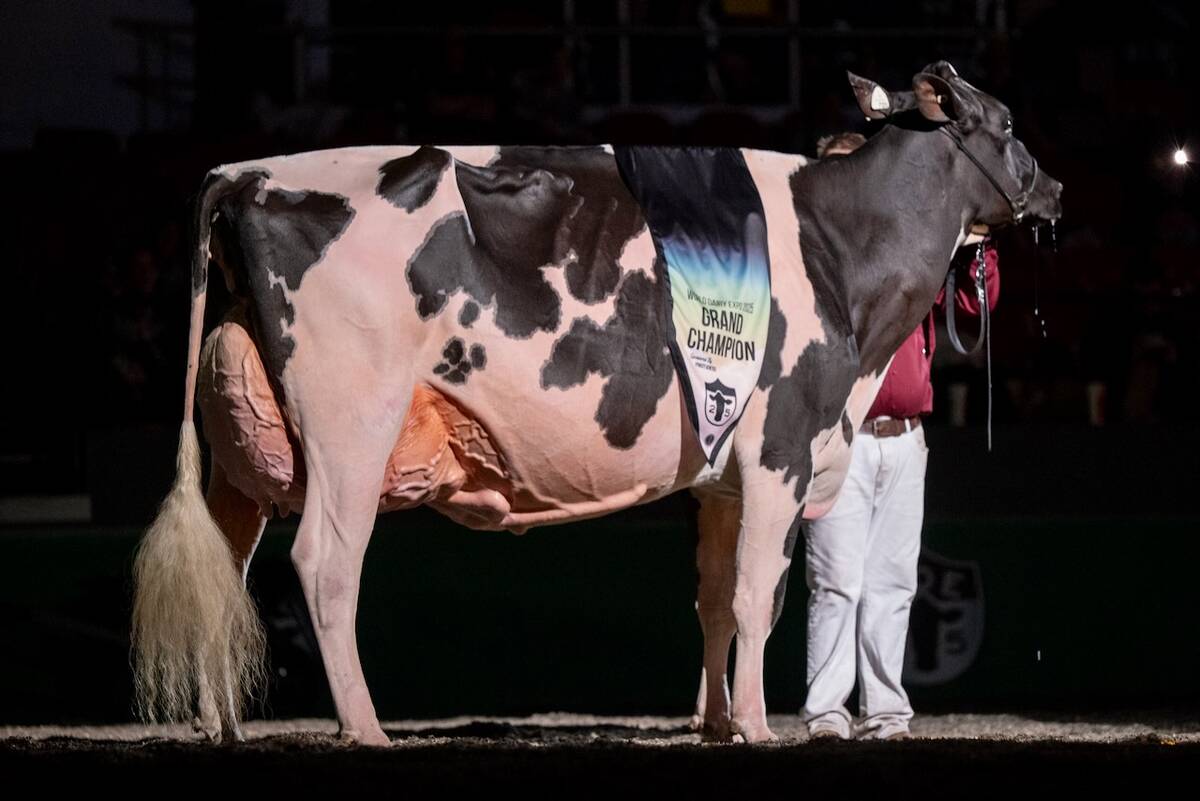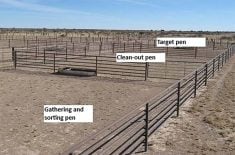Among animals, horses are remarkably adapted to thrive in a wide variety of climates and environments, including some of the more extreme places on Earth. For example, a herd of horses occupies Sable Island, one of Canada’s newest national parks. The horses have lived on the island off the coast of Nova Scotia since the mid-1700s, when storms shipwrecked European boats there. Amidst the harsh Atlantic climate, eating copious sand and tough grasses, these horses are doing just fine with a population of over 500 living on the roughly 50-kilometre-long island.
Read Also

Canadian-bred cow wins World Dairy Expo Holstein show
A cow bred in Saskatchewan, Lovhill Sidekick Kandy Cane, is the Grand Champion Holstein at the 2025 World Dairy Expo.
As Wendy Williams points out in her book The Horse — the Epic History of Our Noble Companion, the evolution of horses over the last 56 million years is one of the best examples of how a species adjusts and changes to environmental variation.
From the five-toed cat-like mammal to the majestic single-toed horse of today, the evolution of equines through the ages is one of the best examples of evolution in the fossil record. This adaptation from forest life to open grassland living set the foundation for the remarkable athleticism horses have today.
Their spleen is one of many adaptations that make horses supreme athletes. In addition to its crucial role in the immune system, the spleen stores extra red blood cells. In times of exertion, thin muscles within the spleen contract to squeeze these cells out into blood vessels and into circulation. The additional red blood cells give an oxygen boost to muscles so horses can run further and faster.
This shot of red blood cells is what nefarious human athletes attempt to achieve through doping with blood transfusions or the hormone erythropoietin (EPO).
In horses, this was an extremely useful adaptation to run away from predators and cover long distances. But their mighty spleen can also hook portions of intestines, leading to colic.
Horses have a unique structure called the guttural pouches in their throat area, which are essentially large air pockets that arise from the eustachian tubes.
The major artery that supplies blood to the brain passes right through them; many believe these air pockets cool the blood before it enters the brain. Your average pasture horse at rest probably needs no such internal air conditioning. But a horse at a full gallop will generate excessive body heat and it is at these speeds that the hot blood may damage the brain.
The guttural pouches can become infected in strangles, and blood vessels are prone to fungal infections, which can lead to fatal bleeds.
When it comes to cardiovascular adaptation, the lungs and heart of horses are huge compared to most other animals. Their heart beats at roughly 35 beats per minute at rest but can ramp up to more than 200 when running. And they have many ribs to house and protect these vital structures (18 ribs compared to only 13 in cattle).
The same features that make them capable of high speeds have probably contributed to their propensity for rupture of major blood vessels, hemorrhage in the lungs and atrial fibrillation, a condition where the electrical signal in the heart misfires so it cannot beat properly.
The legs of a horse are truly remarkable — the hoof is the equivalent of our middle finger nail. This incredible lower leg structure is supported by a complex system of tendons, ligaments and small bones. Consequently, this mechanism allows horses to stand at rest without using their muscles, an adaptation so they can run away from danger in a flash. But there is a trade-off. Horse legs are also susceptible to injury and have poor ability to heal. For example, bowed tendons can be a performance-limiting injury and leg fractures are nearly impossible to treat.
Gradual changes over millions of years have given us the incredibly athletic animal we see today. But some of those same changes explain why horses are susceptible to certain injuries and diseases in modern times.















